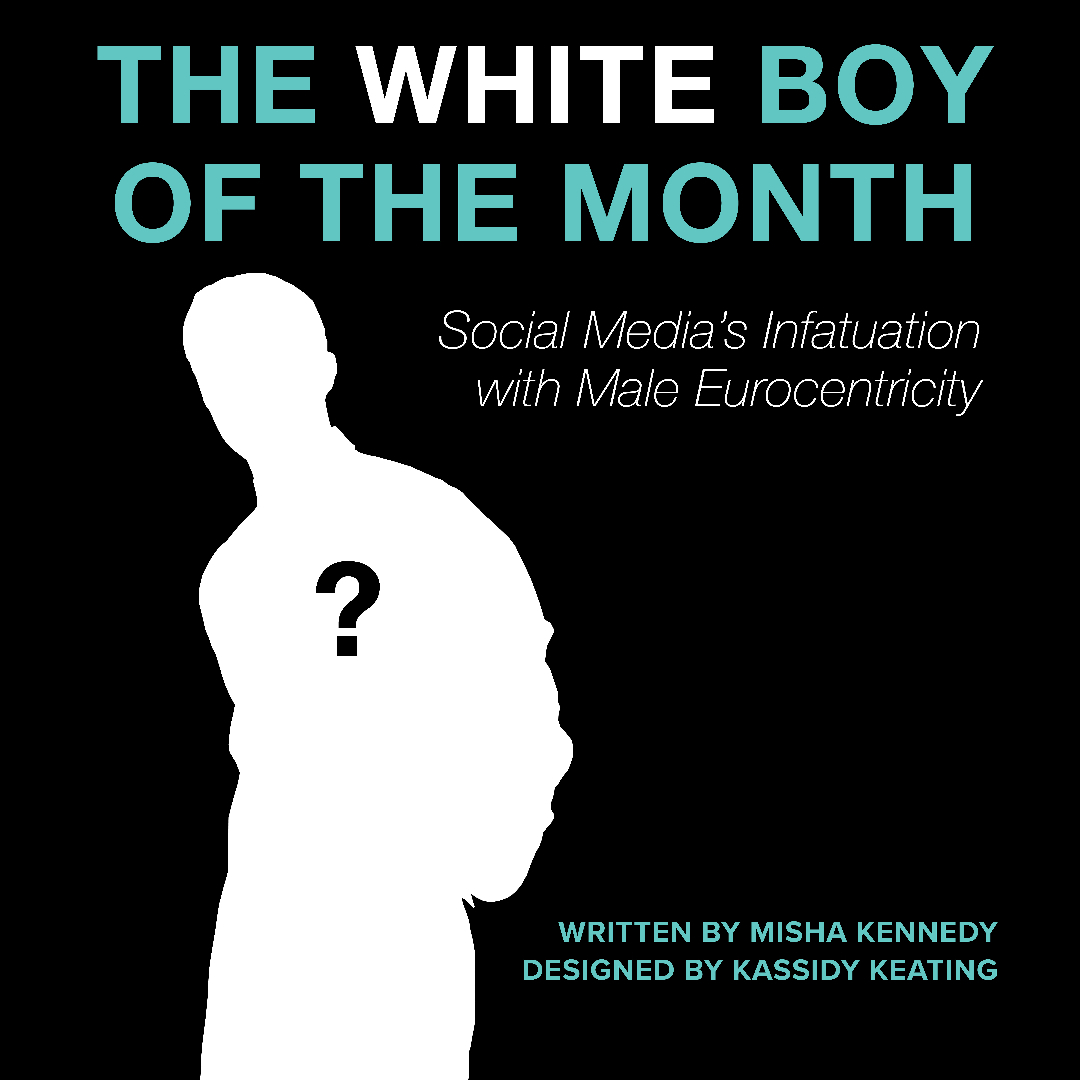
It’s nearing midnight when I open TikTok. Within minutes of scrolling, a familiar pattern appears: pale, brooding eyes, carefully tousled hair and inviting smirks perfectly packaged into curated thirty-second montages, usually set to a dusky Lana Del Rey verse. It’s a white man and they are everywhere. The videos blur into one another as if deliberately chosen and supplied into our social media feeds, incessantly sustaining our collective infatuation. Every month, a new man seems to captivate our hearts; whether it be the vaguely British love interest in an upcoming romance, or the chiseled, bronco-busting football star, nearly all of them share two conspicuous traits: they’re white, and they’re men.
The “White Boy of the Month” first emerged as a means of inducting a new and upcoming white male celebrity as the “media darling of the hour” — often this initiation launches a slew of welcome attention in the form of TikTok edits, fan-written stories and flattering news coverage. All press is good press for these boys, and they ultimately find themselves being celebrated to a degree that their BIPOC and/or female colleagues do not. Though ostensibly harmless, the trend underscores the darker aspects of our society’s view of beauty and desirability.
At its core, the “White Boy of the Month” reflects on social media’s aggrandizement of Eurocentrism, a concept that — mixed with our patriarchal society — dictates whose features we deem beautiful, and thus more deserving of our attention. Social media platforms replicate and uphold a desire for “whiteness” in beauty; everyday our feeds seem to tout the majesty of the sharp and aquiline: European features have dominated since the development of colonialism, and while their command of our beauty ideals seems less overt than before, they rear their heads in our trends. Couple this with the media’s often more intense scrutiny of female celebs — particularly those of color — and you get the ugly truth of the matter: there are inherent parameters to who social media considers desirable.
Take a more recent example of this phenomenon. In autumn of last year, “The Ballad of Songbirds and Snakes” reached peak popularity alongside its male lead, Tom Blyth. Platinum blond and affectedly edgy, Blyth’s portrayal of Coriolanus Snow transformed him into the white boy of November 2023. On the other hand, his female co-star Rachel Zegler faced backlash for being reputedly rude and snobbish. Though both actors were equally as talented and arguably as promising, Blyth received the majority of attention during press tours. His appearance was at the heart of nearly all fan interactions.
Such imbalance in media scrutiny is normalized in fandoms, and the rapidity with which promising POC female celebrities get vilified in the press is both cruel and unusual. This pattern exemplifies just how acquiescent we are to our male-centered society. We embellish the feats of a new “white boy” every month, profess his appearance to be flawless, and his work pristine; he’s loved, he’s lauded. His newfound popularity coaxes him towards “Bigger and Better” things, he gets the fame, perhaps an inkling of prestige along with it. And thus, our white boy of the month is handed a crown that society has more or less created to place upon his head.